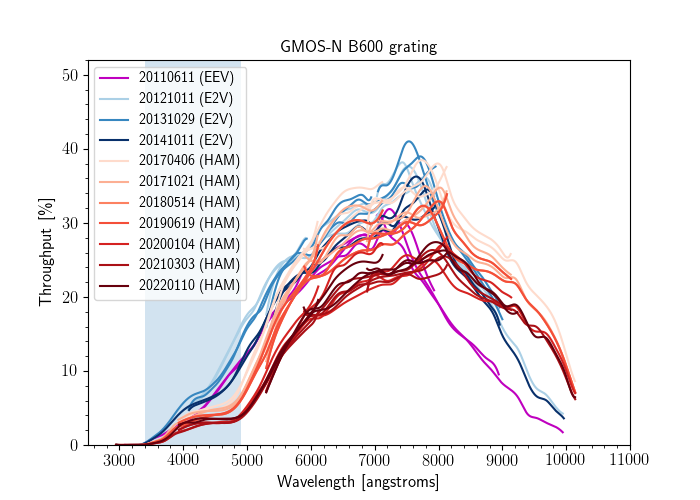GNIRS Ready for Science and IFU Update
GNIRS has been reinstalled on the telescope after the extended shutdown and is ready for science use as of June 6, 2023. All slit spectral modes along with imaging are available. Both the Low Resolution and High Resolution IFUs are now installed and are undergoing commissioning. They will be released for science use at a later date.
First pipeline reduced GHOST observations & available data
We are pleased to present the first GHOST science observations that have been reduced with the GHOST pipeline. We are releasing the spectrum of XX Oph (Be + Red Supergiant; V= 8.59-10.2 mag) as an example to showcase the spectral range, spectral resolution, and overall quality of data that GHOST can provide in standard resolution mode (R=50000; with a total integration time of 240s, and a wavelength range of 347 to 1060nm).
GHOST expected Special Call in 2023B, none in 2023A
GHOST has not yet been fully commissioned and information such as sensitivities is pending. For this reason GHOST is not offered as an instrument for regular science in 23B. We expect most modes to be fully commissioned late 23A, and for there to be a special Call for proposals in 23B. We will post an announcement as soon as we have more details on the special call in 23B.
H alpha filter installed in 'Alopeke
Since November 'Alopeke has now a Halpha filter. The specifications are identical to the one installed at Zorro. The filter is available to anyone applying to 'Alopeke time.
On GMOS-S MOS data reduction: fixing MDFs
After the GMOS-S detector troubleshooting earlier this semester, the physical location of the array has shifted by a small amount in the -direction. While this did not have harmful consequences, the Y-shift has the effect of the MOS mask slits as defined on the MDF appearing with a small (~20 pix) yet systematic offset with respect to the actual location of the spectra.
November 2022 GHOST Update
After successfully assembling and testing the spectrograph and enclosure from April through June, the team was able to observe with GHOST on-sky for only two good nights at the end of June due to poor weather conditions. A few more good nights in September resulted in further commissioning progress. Presently, the team is working on improving the data deduction pipeline software and the telescope control software to remedy issues determined during these commissioning runs. These improvements are expected to be complete by early 2023.
Reduced blue sensitivity of GMOS-N B600 grating
It has recently been noticed that the sensitivity of GMOS-N B600 observations at wavelengths blueward of 500 nm is significantly lower than predicted by the Exposure Time Calculator. Historic data of spectrophotometric standard stars show that this reduction in sensitivity is largely attributed to a decrease of the B600 grating response, which started to develop around 2013 to 2014.

IGRINS removed from telescope
IGRINS was removed today from telescope to leave way for GHOST installation. After that, IGRINS will go through a scheduled maintenance by a team from KASI, and it will back at the telescope on October 17th.
IGRINS back on the telescope
Following successful checks on Friday after the yearly engineering shutdown, IGRINS is back doing observations. The instrument will remain on the telescope until Sept 7th.
GMOS-S CCD2 issues
The repair attempted during July was not successful, and the problem on CCD2 (amplifier #5) persists. On the other hand, the noise patterns on CCD2 and CCD3 are gone.
The situation will remain like this during semester 22B since the only possible solution requires a major intervention, which is not planned for the current semester.